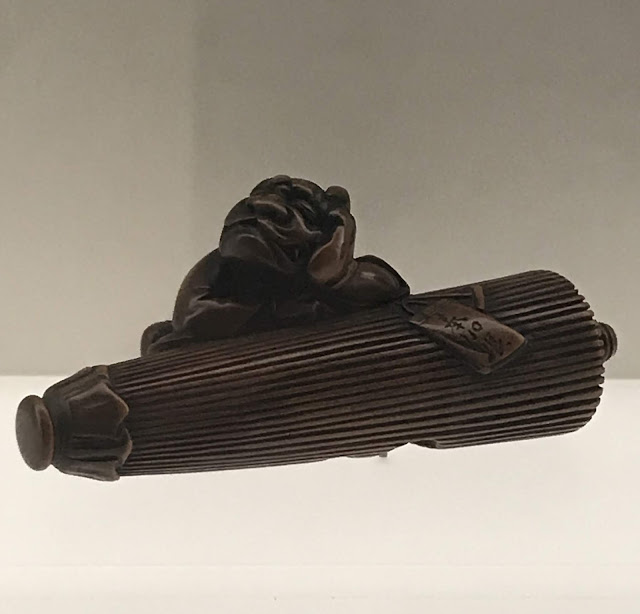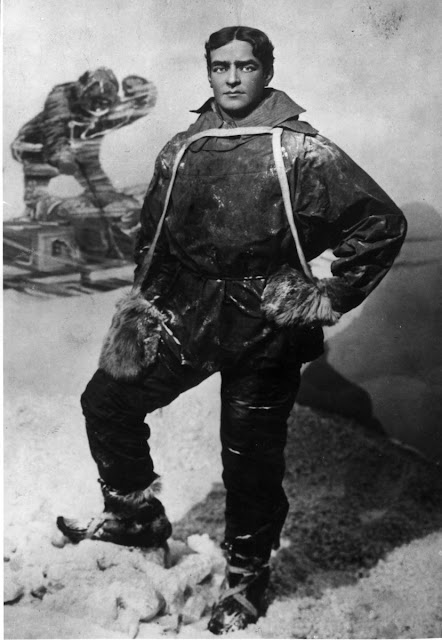It is nothing new to hear, Dear Reader, that while our continent is ancient, Australia is new. The Aboriginal Songlines* which mapped out this country so effectively for tens of thousands of years remain a mystery to the non-indigenous, yet it is still possible to unwittingly travel along one ghostly Songline in our city of Sydney today - courtesy of the 333 bus, no less. According to Eoghan, the enthusiastic guide (and self-described raconteur and flâneur) on our most recent
Sydney Architectural Walk, the 333 bus essentially follows a ten-thousand-year old Aboriginal walking trail from present-day Circular Quay to Bondi Beach. It is, by extension, arguably the oldest bus route in the world.
 |
Francois Peron Sydney Map, 1802
Sans Bus Stops |
A cursory glance at an early map of Sydney shows a distinct lack of urban planning. When the Georgian-era First Fleeters first pitched their tents here 200-odd years ago, they discovered, like the Aboriginal people had, the quickest and easiest way to get from A to B was to follow the topographical ridges. Hence the routes of our first roads followed these worn paths. Thence the valleys between were filled in. Eventually wiser heads stepped in and declared grid plans for the rest. But some of these early Aboriginal paths formed the foundation of many major Sydney streets.
 |
Sydney's Milestone Obelisk
With Bushfire Haze |
This delightful nugget was just one of the many fascinating by-ways discussed as Mr. P & I perambulated around a pocket of Sydney Harbour's foreshore last week with the Effervescent R & A. This was our
second walk guided by Eoghan, themed "Harbourings" - our first focussed on
architect Jorn Utzon and the Sydney Opera House - and both cannot be recommended more highly by us if architecture, history, urban design, factoids, or just strolling with purpose are of any interest.
Although we struck out at a leisurely pace, and a true old-fashioned flâneuse should really Make an Effort, these are modern times and dressing on this anticipated hot day was capital-c casual and indeed my heavy-duty sunhat and precautionary mask against the pall of bushfire smoke made for the most remarkable look I've managed to put together for all of 2019 - #ootd. But I digress ...
Our starting point was a discussion of the shape of the present city as seen in the 3-D architectural model under the entrance floor of Customs House. I love these versions of the Map (
Game of Thrones opening credits, anyone?) Indeed all old maps hold an irresistible pull for me. From the charmingly drawn Village Map inside the covers of my childhood Milly-Molly-Mandy books to the glorious antiquarian maps (which I blessedly do not collect - $$$!) with their sea-monsters and vague borders of the Unknown World. Old city maps give me a sense of place in the world and a glimpse into what came before the often dramatic transformations of the urban landscape.
 |
| Eoghan On Terrazzo |
We stopped at another relief map nearby of Sydney Cove in 1808, rendered in terrazzo with a bronze shadow line of the foreshore in 1988, for some more history behind the evolving shoreline. My News Blackout and evident failure to Get the Memo saw me puzzling over the casual gathering of uniformed police to one side of us and then some surprisingly youthful Trotskyists and Marxists arrived with sandwich boards and folding tables and started to gather at another.
 |
| Harbour Bridge On A Marxist-Free Day |
The philosopher and Marxist
Walter Benjamin, who had a thing or two to say about the Art of the Flâneur, would have been heartened to see that Marxism is still a Thing in this neck of the woods, but we had no time for the megaphones and growing numbers of protest marchers who, it transpired, eventually walked across the Harbour Bridge.
 |
| A Feng Shui-ed Doorway On A Wharf |
It was under the Bridge for us, via an amble around The Rocks and a couple of (surprisingly) deserted public parks to finish at the timber wharves of Walsh Bay, while the discussion meandered around:
 |
| The Tank Stream, 1822 |
the chance discovery of Sydney Harbour in the search for fresh water for the convict arrivals and their soldier guards in 1788;
this later-named freshwater Tank Stream not only dictating the shape of the settlement but defining the social and economic divide of this fledgling Georgian outpost and what it means even today;
the chance arrival of the French a few days later under the doomed command of the comte de Lapérouse leading to the fortification of Sydney Harbour against,
ahem, anticipated French invasion**;
successive governments and their impact on the architecture around the harbour (always controversy corner!);
social housing in the city;
the contribution to the world of Architecture Sydney has made with the international competition model for projects in the City;
differing alcohol licensing laws between Sydney and Melbourne and how this impacted each city;
the various merits of the new skyscrapers around our skyline;
the design of the wooden finger wharves at Walsh Bay and their heritage significance;
feng shui ... and more!
It was a marvellous morning to perambulate with Eoghan and if you should find yourself with a birthday treat of a voucher for Sydney Architecture Walks, run, don't walk!
Mr. P & I thank you, again, E. R. & A!
* Bruce Chatwin's
Songlines is a magical read to discover more about the ancient art of mapping and navigating a country in pre-literate times.
** It endlessly amuses us to know that the French aerospace company Thales Group is firmly ensconced in our local naval base and numerous French families live and work here. Mission accomplished!
Image credits: Google - 1; Wikimedia Commons - 5; Dictionary of Sydney - 9; Flying With Hands - all others

















_(14585145288).jpg)


































